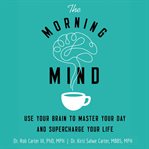- Subjects
- Published
-
New Haven :
Yale University Press
[2022]
- Language
- English
- Main Author
- Item Description
- First published as Life time: the new science of the body clock, and how it can revolutionize your sleep and health.
- Physical Description
- xiii, 465 pages : illustrations ; 23 cm
- Bibliography
- Includes bibliographical references and index.
- ISBN
- 9780300266917
- List of Figures
- List of Tables
- List of Abbreviations
- Introduction
- 1. The Day Within
- 2. A Heritage from Our Cave Days
- 3. The Power of the Eye
- 4. Out of Time
- 5. Biological Chaos
- 6. Back in the Rhythm
- 7. The Rhythm of Life
- 8. The Seven Ages of Sleep
- 9. Time Out of Mind
- 10. When to Take Drugs
- 11. A Circadian Arms Race
- 12. Eating Time
- 13. Finding Your Natural Rhythm
- 14. The Circadian Future
- Appendix I. Studying Your Own Biological Rhythms
- Part I. Developing a Sleep Diary
- Part II. Chronotype Questionnaire
- Appendix II. The Key Elements and Overview of the Immune System
- References
- Acknowledgements
- Index

